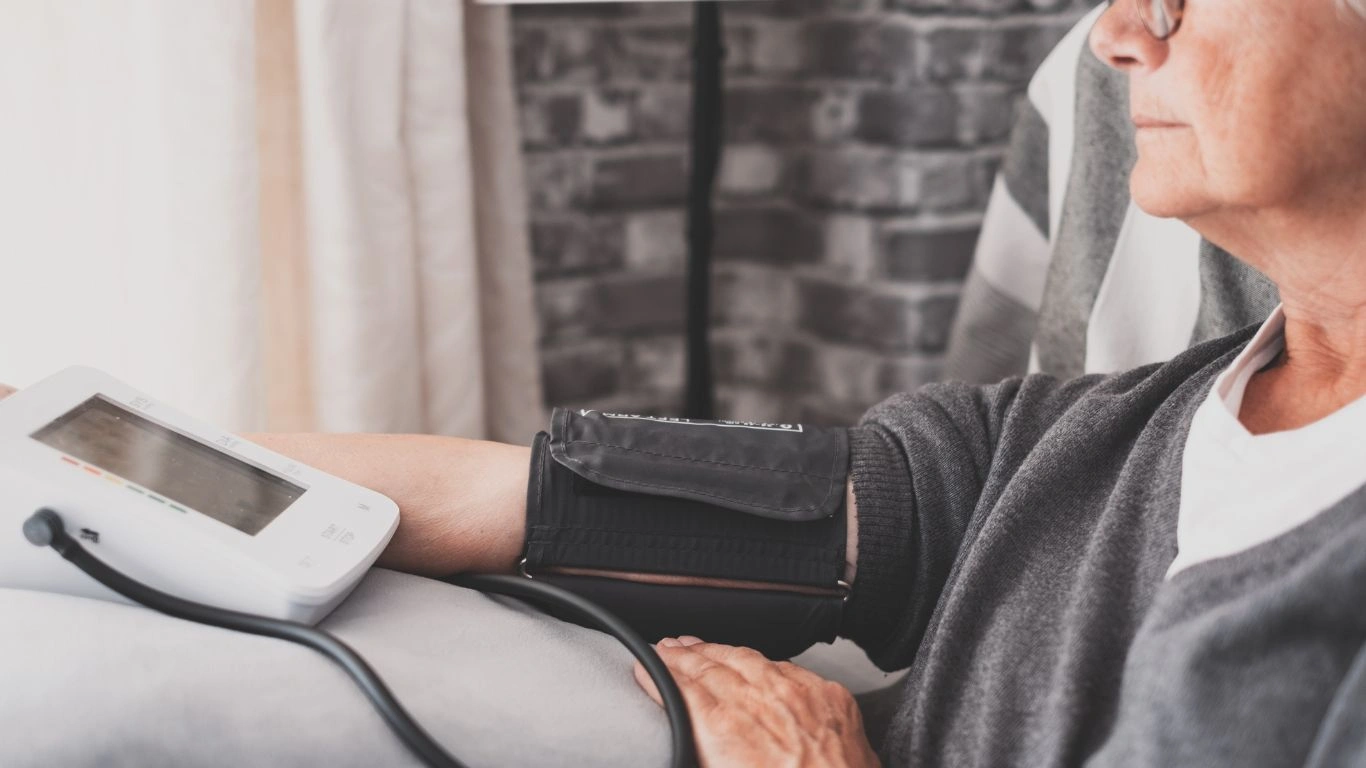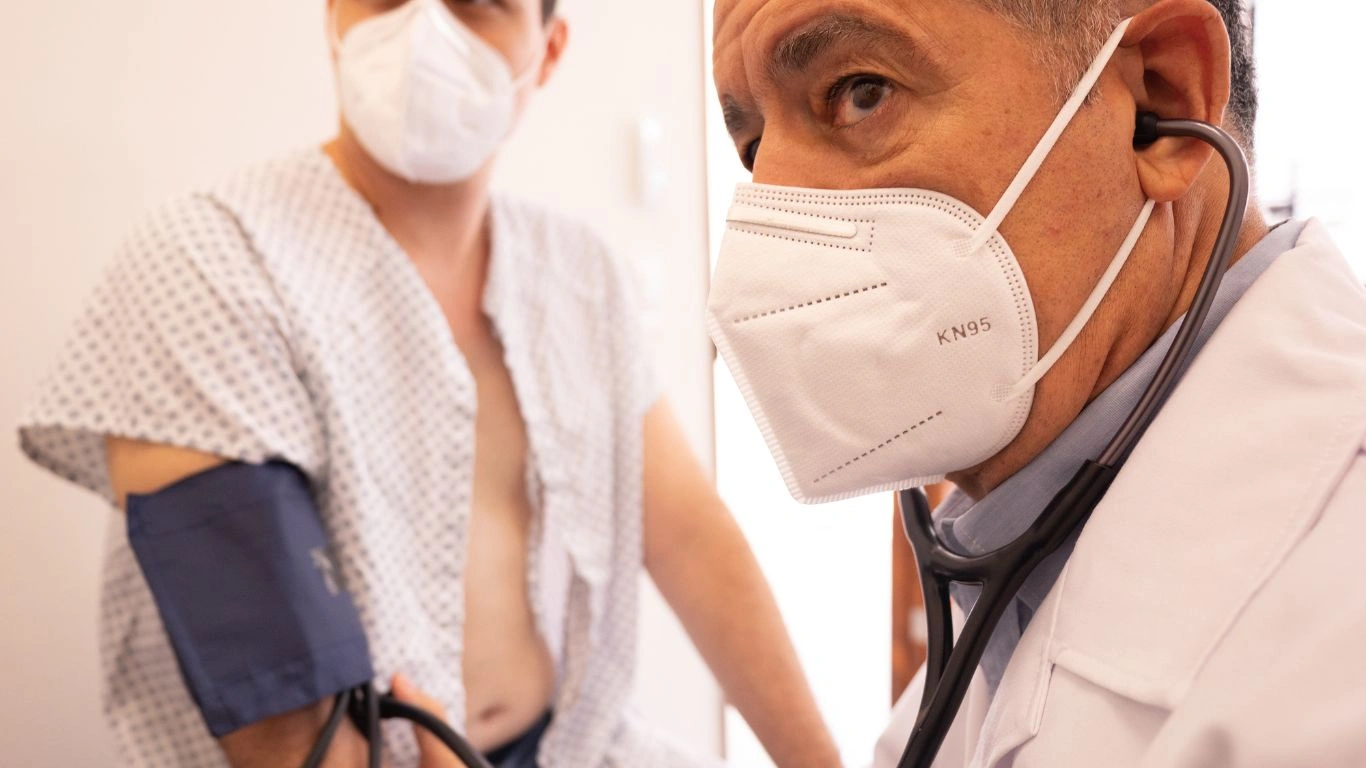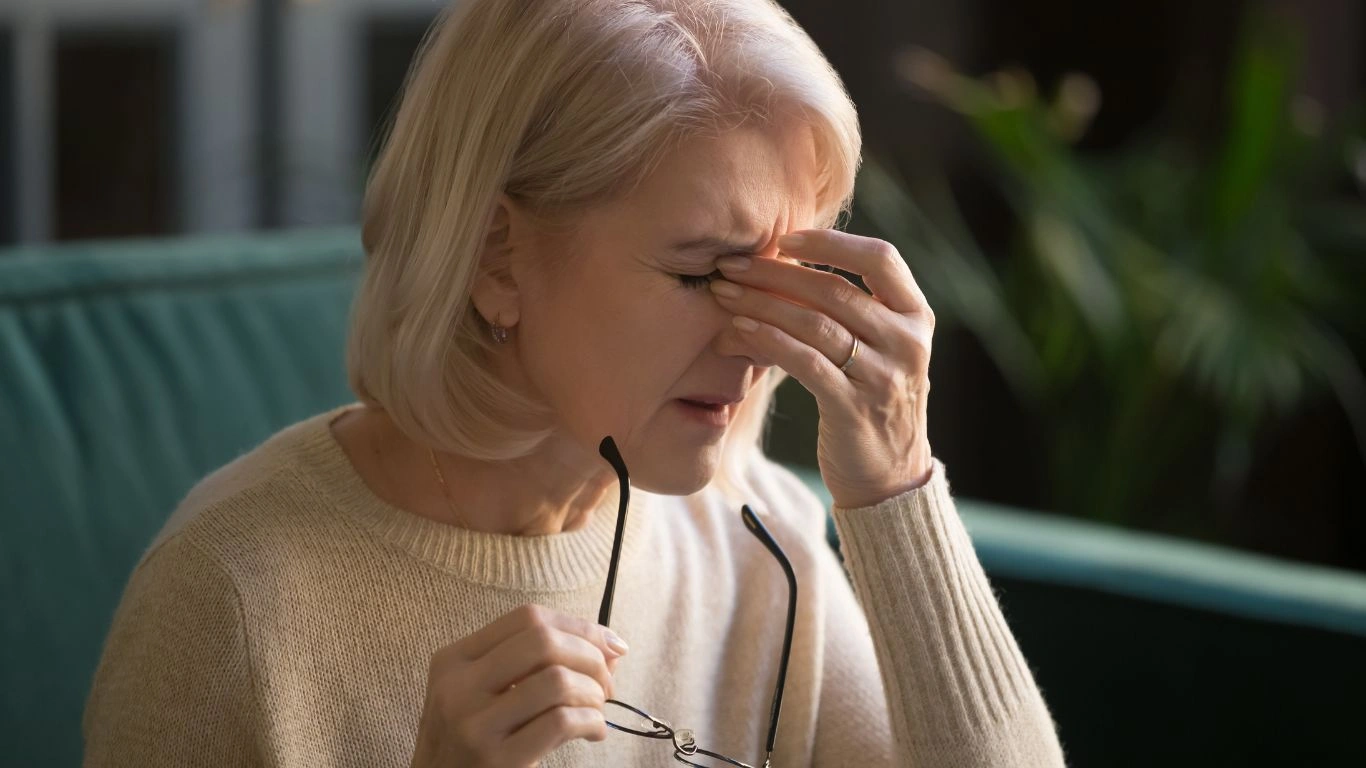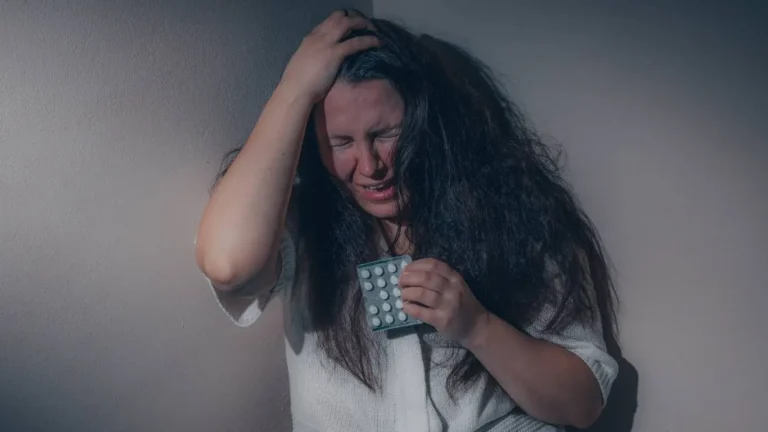7 Best Yoga Poses to Lower Blood Pressure Fast & Naturally
When it comes to managing high blood pressure, most people think of medication, diet changes, or cardio workouts. But did you know that yoga can be a game-changer? Yep, you heard me right! Practicing yoga regularly can help reduce stress, improve circulation, and even bring down those blood pressure numbers. In this guide, I’ll share some tips for lowering blood pressure with yoga, along with my own experiences and expert advice. So, roll out your mat, take a deep breath, and let’s dive in!
How Yoga Helps Lower Blood Pressure

Yoga isn’t just about fancy poses and deep breathing—it’s a holistic approach that benefits the body, mind, and heart. Studies have shown that certain yoga practices can:
- Reduce stress and anxiety – Stress is a major contributor to high blood pressure, and yoga’s mindfulness techniques help calm the nervous system.
- Improve circulation – Deep breathing and gentle movements enhance blood flow and oxygen delivery to vital organs.
- Lower heart rate – Regular practice can train your heart to beat more efficiently, reducing strain on your arteries.
- Enhance flexibility and muscle tone – Stronger, more flexible muscles improve overall cardiovascular health.
As someone who’s worked with countless hypertension patients, I’ve seen firsthand how adding yoga to their routine made a huge difference. One of my clients, a 52-year-old woman who struggled with medication side effects, found that just 15 minutes of daily yoga helped her feel calmer and more in control of her blood pressure.
Best Yoga Poses for Lowering Blood Pressure

If you’re new to yoga, don’t worry! You don’t need to twist yourself into a pretzel to see results. Here are some beginner-friendly poses that help regulate blood pressure:
1. Sukhasana (Easy Pose) with Deep Breathing
Sitting cross-legged with a straight spine, close your eyes and focus on deep belly breathing. This simple pose helps slow down the heart rate and ease tension.
2. Viparita Karani (Legs-Up-The-Wall Pose)
This is my personal favorite! Lie on your back and rest your legs against a wall. It improves circulation, reduces swelling in the legs, and promotes relaxation.
3. Balasana (Child’s Pose)
Gently stretch your back, hips, and arms while breathing deeply. This pose helps release stress and tension, making it perfect for blood pressure control.
4. Setu Bandhasana (Bridge Pose)
By lifting your hips while lying on your back, you stimulate circulation and relax the nervous system—two key factors in keeping blood pressure in check.
These poses may seem simple, but trust me, consistency is key! Even just 10-15 minutes a day can make a noticeable difference in how you feel.
Breathing Techniques to Support Healthy Blood Pressure

Now that we’ve covered the best yoga poses, let’s talk about something just as powerful—breathing techniques. You might be thinking, “I already breathe all day, what’s the big deal?” But here’s the thing—most of us don’t breathe in a way that optimally supports our health.
Slow, controlled breathing signals the nervous system to relax, reducing cortisol levels and helping blood vessels dilate, which naturally lowers blood pressure. I’ve had clients tell me they feel an almost instant sense of calm after just a few minutes of focused breathing. If you haven’t tried it yet, here are some of my favorite techniques:
1. Diaphragmatic Breathing (Belly Breathing)
This is a simple yet powerful technique. Place one hand on your chest and the other on your belly. Inhale deeply through your nose, allowing your belly to rise while keeping your chest still. Exhale slowly through your mouth. Repeat for 5-10 minutes. It’s a great way to reduce stress and stabilize blood pressure.
2. Alternate Nostril Breathing (Nadi Shodhana)
Sounds fancy, but it’s easy! Using your right thumb, close your right nostril and inhale through the left nostril. Then, close the left nostril with your ring finger and exhale through the right nostril. Switch sides and repeat. This technique balances the nervous system and improves oxygen flow.
3. 4-7-8 Breathing
One of my personal favorites for bedtime! Inhale for 4 seconds, hold for 7 seconds, and exhale slowly for 8 seconds. This method helps regulate the heart rate and reduce anxiety, making it a great practice before sleep.
Try incorporating one of these into your daily routine—you might be surprised by how much calmer (and healthier!) you feel.
Yoga and Lifestyle Changes: A Powerful Combo

While yoga and breathing exercises are amazing tools, they work even better when combined with other healthy lifestyle changes. Over the years, I’ve seen the best results in my clients when they tweak their daily habits alongside their yoga practice. Here are a few things to consider:
- Watch Your Salt Intake – Too much sodium can make high blood pressure worse. Try swapping out processed foods for fresh, whole ingredients.
- Stay Hydrated – Dehydration can cause blood pressure spikes, so keep that water bottle handy.
- Move More – In addition to yoga, walking, swimming, or light strength training can help keep your heart in top shape.
- Prioritize Sleep – Poor sleep increases stress hormones, which can send your blood pressure soaring. Aim for 7-9 hours of quality sleep.
- Limit Caffeine & Alcohol – These can raise blood pressure, so try cutting back and see how your body responds.
One of my clients, a 45-year-old man who was borderline hypertensive, saw a huge improvement in his numbers by combining yoga, meditation, and dietary changes. Within a few months, he went from dangerously high readings to completely normal blood pressure—without medication! That’s the power of a holistic approach.
Creating a Yoga Routine That Works for You
Now, I know what you’re thinking—”Sounds great, but where do I even start?” The key is to keep it simple and be consistent. Here’s a basic routine to get you going:
- Morning: Start your day with 5-10 minutes of belly breathing or alternate nostril breathing.
- Midday: If you’re feeling stressed, take a break and do a few rounds of 4-7-8 breathing.
- Evening: End your day with 15-20 minutes of gentle yoga poses like Legs-Up-The-Wall or Child’s Pose.
It doesn’t have to be complicated! Even a few minutes a day can make a world of difference. Stick with it, and over time, you’ll start noticing subtle (but powerful) changes in your body and mind.
Case Studies & Real-Life Examples

Nothing is more powerful than real-life success stories, right? Over the years, I’ve worked with countless individuals who have used yoga to lower their blood pressure—sometimes dramatically. Let me share a few inspiring cases.
Case Study #1: Sarah’s Journey from Hypertension to Harmony
Sarah, a 52-year-old teacher, came to me frustrated. Her blood pressure was consistently in the 150s/90s, and she felt exhausted all the time. She was on medication but didn’t feel great about relying on pills alone. After just three months of practicing yoga four times a week—focusing on gentle stretches, deep breathing, and meditation—her readings dropped to 125/80. More importantly, she felt calmer, more in control, and had fewer stress-related headaches.
Case Study #2: Mark’s Escape from the Stress Trap
Mark, a 40-year-old corporate executive, had been running on stress and caffeine for years. When he hit a BP reading of 160/95 at a routine checkup, he knew something had to change. He committed to doing 10 minutes of alternate nostril breathing every morning and added restorative yoga twice a week. Six months later? His blood pressure stabilized at a healthy 118/78, and he finally started sleeping through the night.
These stories aren’t rare. With commitment and consistency, yoga can be a game-changer for managing high blood pressure.
Key Takeaways: What You Need to Remember
Let’s do a quick recap! If you take anything away from this, it should be:
- Yoga is powerful – It lowers stress, relaxes blood vessels, and helps regulate blood pressure.
- Breathing techniques matter – Practices like diaphragmatic breathing and alternate nostril breathing work wonders.
- Consistency is key – Even 10-15 minutes a day can lead to noticeable improvements.
- Pair yoga with other lifestyle changes – Healthy eating, exercise, hydration, and sleep all play a role.
Remember, yoga isn’t a quick fix—it’s a lifestyle shift. The more you embrace it, the better your results will be.
FAQs
Q: How quickly can yoga lower blood pressure?
A: Some people notice a difference in a few weeks, while others may take a couple of months. The key is consistency!
Q: Can I replace my medication with yoga?
A: Always talk to your doctor first. Many people find that yoga helps enough to reduce medication dosage, but never stop taking meds without medical supervision.
Q: What type of yoga is best for hypertension?
A: Gentle forms like Hatha, Yin, and Restorative Yoga are great. Avoid intense styles like Hot Yoga or Power Yoga, as they can raise blood pressure.
A: Absolutely! Yoga is one of the best natural ways to reduce cortisol levels, which can directly impact blood pressure.
Bonus: Additional Resources or DIY Tips
Want to dive deeper? Here are some additional resources to keep you on track:
- American Heart Association – Great info on heart health and blood pressure management.
- Yoga Journal – A fantastic resource for learning new yoga poses.
- National Library of Medicine – Research studies on yoga’s effects on blood pressure.
Appendix: Table, References, Disclaimer, and Call to Action
Recommended Yoga Poses for Lowering Blood Pressure
| Yoga Pose | Benefit |
|---|---|
| Legs-Up-The-Wall | Promotes circulation and relaxation |
| Child’s Pose | Reduces stress and tension |
| Seated Forward Bend | Encourages deep breathing and relaxation |
References
- National Institute of Health: Yoga and Hypertension
- American Heart Association: Yoga for Blood Pressure
Disclaimer
This article is for informational purposes only and is not a substitute for medical advice. Always consult with a healthcare professional before making changes to your health routine.
Call to Action
Are you ready to take control of your blood pressure with yoga? Start small, stay consistent, and let your journey to better health begin! Drop a comment below or share this with someone who could benefit from it. Let’s spread the power of yoga together!

Dr. Gwenna Aazee is a board-certified Internal Medicine Physician with a special focus on hypertension management, chronic disease prevention, and patient education. With years of experience in both clinical practice and medical writing, she’s passionate about turning evidence-based medicine into accessible, actionable advice. Through her work at Healthusias.com, Dr. Aazee empowers readers to take charge of their health with confidence and clarity. Off the clock, she enjoys deep dives into nutrition research, long walks with her rescue pup, and simplifying medical jargon one article at a time.






